4 Tips to Integrate SEL into Classroom Culture
By Carla Tantillo Philibert and Peggy Collings

Carla
It’s a jungle out there, or in here, if you regularly inhabit a middle school classroom. Middle school students can be caring, sweet, and genuinely concerned for their community. But then there’s the other side, the shadow side, of middle schoolers.

Peggy
Teachers and students alike have seen middle school students treat one another as though they are predator and prey. They sometimes show some very unattractive blemishes when navigating the unfamiliar ways of attracting the attention of a potential friend or fending off unwanted social advances.
So how do we help our students adopt a kinder, gentler manner dealing with one another? Our classroom culture is Priority One in establishing norms for communication. Integrating the Social Emotional Learning (SEL) goals for your district or state needs to be a priority to redirect the eat-or-be-eaten social atmosphere of tweens and young teens.
Often we assume that by the early teen years, children have developed social skills, but this is often the age when they need to work on these grounding activities the most. We offer these four tips to keep your middle graders social-emotional learning part of your everyday lesson planning.
1. Creating Agreements
Middle school students are social beings. Most of them thrive in a team environment. Those group projects need structure to achieve success, though. Aside from the roles in literature circles or assignments for each lab partner, use some whole group time to establish Shared Agreements for any occasion when students will work with partners or groups. Agreements help ensure equity of voice in a physically, emotionally and mentally safe space.
Some examples of implementing the Agreements include (a) speaking up for your thoughts and opinions even if they differ; (b) including some contribution from every group member in the final product; and (c) active listening.
We use table taps – two-finger taps on a desktop to gently remind peers that they might be breaking one of the Agreements. Table taps can also be a call for help from an adult when group members find themselves unable to move toward their goal.
Before breaking up into groups for any academic exercise, have a student volunteer read these shared Agreements aloud. Repetition is key, so do this until they are fully ingrained and repeat when you see they need bolstering.
Developing these shared Agreements and reminding each other of them before any group activity will improve the outcomes of all your partner or group exercises.
2. Movement or Breathing Breaks
Sometimes it is movement, not stillness, that is the most accessible and calming practice for students – especially if those students have experienced trauma or live in a community where trauma is prevalent (Everyday SEL in Middle School, p. 25).
Even just one minute of deep, slow breaths can change the attitude of the group. Paired with some stretching, yoga or dancing, those deep breaths can be transformative. Build them into your instruction and encourage everyone to be a part of this brain break.
Students will look forward to your class because they know they won’t be required to sit still for the whole period. Let them count on you for a minute of movement no matter how much geometry you need to teach before the state test!
When we visit classrooms, we sometimes see teachers directing movement, but not participating. This robs the instructors of the same brain break you are facilitating for your students. Perhaps you feel silly bending or stretching with your students watching.
But opting out of these exercises yourself can be contagious; middle school students are too sensitive to their appearance to chance feeling silly in front of peers. So model full participation for them. Some students may opt out anyway, and that has to be okay, but encourage the activity for all, and use a little peer pressure to participate to your advantage.
► Try a Seated Arm Stretch to begin a class period:
✻ Begin in a seated position, spine straight and tall. Lift your arms to a T position.
✻ Then raise your arms above your head, and interlace your fingers.
✻ Next, flip your palms to the ceiling, and ground your shoulders down.
✻ Take three deep breaths, closing your eyes if that feels comfortable.
✻ Release!
► Try a SELF Breath together:
Take Slow, Even, Long, Full breaths to a count of four inhaling and four exhaling. With practice, the class will master the four-count breaths. Then challenge them to make their breaths six or even eight counts. Breathing together builds unity.
3. Take Time for Self-care
Teachers and students all have days when the cares and worries outside the classroom distract us from the important work we do together. Preteens may not even know or be able to name for themselves why they feel so “out of it.” We all need tools to bring us back to the present so we can focus on the lesson.
Students need not only opportunities and self-care strategies to practice, but also regular check-ins to recognize when they might benefit from a bit of self-care. It’s not selfish to focus on yourself for a few minutes; it’s better for everyone. If students can recognize when they’re not ready-to-learn, they might be more attuned to what is preceding that feeling, and thus, they learn their own triggers.
Between stimulus and response there is a space. In that space is our power to choose our response. In our response lies our growth and our freedom.” – Austrian neurologist Viktor Frankl
What’s setting your students off, keeping them from being the best version of themselves? Your job description may not include developing students’ self-awareness, but it should. Knowing themselves can be the first tool in the set they need to be successful in managing their own behavior and learning, not just in school, but in family and social situations, and their adult lives.
► Try Brain Massage with your students:
Begin with feet flat on the floor and straight spines. Tap fingers gently on the forehead, temples, under the eyes, bridge of the nose, jawline and chin. Use all the fingertips simultaneously to gently knead the scalp. Use a bit more strength in the fingertips to pull the skin on the back of the neck forward a few times. Roll the shoulders back. In just a few moments you will feel better, the students will feel better, and you’ll all be ready to focus on the lesson.
4. Build Trust
Building trust is easier said than done. It takes time and energy that teachers are usually reluctant to devote to activities that don’t necessarily match up with today’s stated learning target. But building trust among your students creates a synergy that enhances the other tips here.
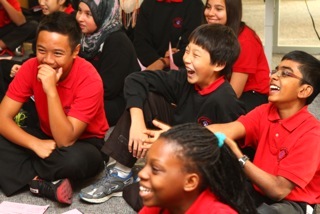
If you or other teachers have tried these activities and they flopped, be sure to give students a reason why you’re trying them again. “I have seen and heard from some students that they’re just not comfortable sharing with peers. Sometimes sharing something silly or funny helps us feel more comfortable with each other, and it can open the door to sharing more deeply, sharing things that are really important to us.”
Rome was not built in a day, and neither is trust. We shouldn’t expect that one or two attempts at greater camaraderie will yield results. For students to feel safe sharing with peers, we need to help them practice being kind and paying genuine compliments to each other. Simply noticing what a classmate might be feeling and acknowledging it can go a long way toward fostering a positive classroom culture.
The teacher sets the tone for classroom climate, but the students need to own it, too. Conversely, we need to “interfere” when that trust is broken with unkind words or actions. Simply letting it go won’t work.
Social Emotional Learning doesn’t have to be something that takes time away from your subject area instruction. It needs to be infused into all the activities you do. Social Emotional Learning is helpful in building a classroom culture that feels safe and positive for everyone, and we need to foster those SEL skills so that students see for themselves how important they are beyond our classrooms.
__________________________
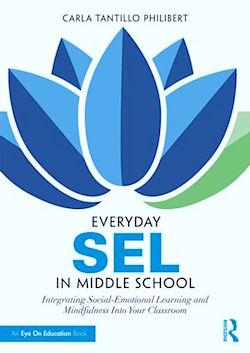

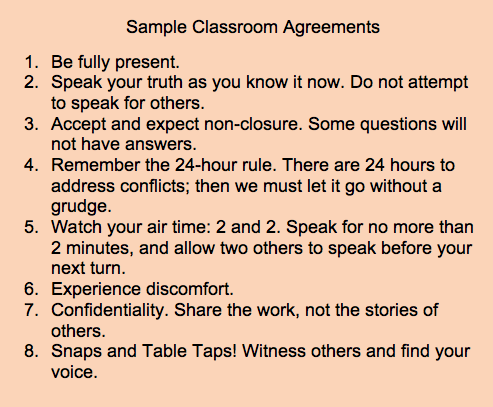
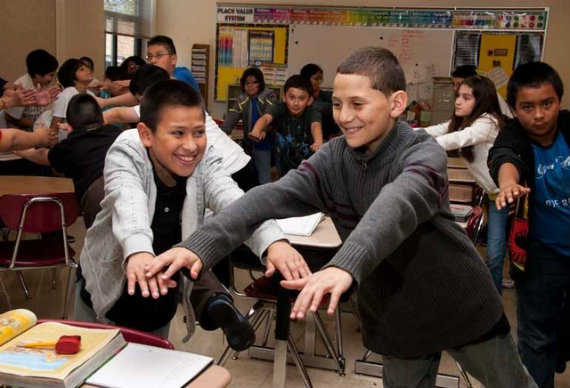
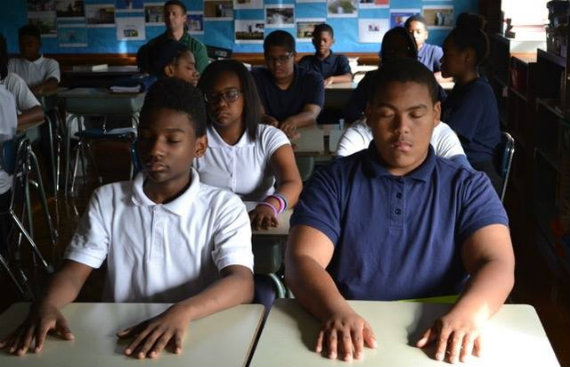


































Thank you, Middle Web! I am honored to be included in this amazing resource! Readers, I would love to hear from you! Please feel free to reach out with questions, comments and ideas! :)
Thank you so much for sharing these ideas on a very important topic!
Absolutely, Lisa! Please don’t hesitate to reach out, if you have any questions or concerns once you start to implement the strategies listed in the article! Carla@MindfulPracticesYoga.com